New counsel has taxing background
September 26, 2014
After his appointment this week as Los Angeles County Counsel, Mark Saladino braced for the lawyer jokes. He knows only too well the consequences of assuming a less-than-crowd-pleasing job title after serving for 16 years as the county’s Treasurer and Tax Collector.
“The worst reaction I ever had was a gentleman telling me, ‘You’re the tax collector? In the Bible, you’re lower than prostitutes,’” Saladino, 56, said with a laugh.
Despite its perceived notoriety, Saladino is excited about becoming the County Counsel and taking over a public law office that has had three “permanent” and two “interim” leaders just in the last five years because of back-to-back retirements.
The Board of Supervisors approved his appointment Tuesday and will administer his oath of office on October 15. Saladino will supervise a staff of about 600 — half of them lawyers — and receive an annual salary of $288,915.
“I think one of the biggest challenges facing the Office of County Counsel is management,” Saladino said in an interview Tuesday. “One of my distinguishing characteristics is that I’ve been a department head for 16 years so I’m familiar with all the administrative functions of county departments, and most lawyers don’t get that kind of background.”
During his tenure at the Office of the Treasurer and Tax Collector, Saladino made operations more efficient by providing taxpayers with online payment options and by automating various processes.
“Our department suffered significant budget cuts during the recession, and the only way we could keep up with our increasing workload was to do more with fewer people,” he said.
“It used to be that during tax time, we would hire more than a dozen people just to open envelopes and process checks, and then we had armored cars take those checks to the bank,” he added. “Now, the mail is opened by machines and checks are deposited electronically, which is faster and safer.”
Saladino also took credit for helping to boost the county’s credit rating in the midst of the recession, when several jurisdictions nationwide went bankrupt.
“Our board and CEO exercised the budget discipline necessary during that very difficult time,” he said. “My role was to make sure that our investments were sound.”
Saladino holds a Bachelor of Science degree in Finance with High Honors from the University of Illinois, and a Juris Doctor degree from New York University. What he doesn’t have is recent legal experience.
Throughout the 80’s and much of the 90’s, Saladino worked as an attorney for Hawkins, Delafield & Wood in New York City; Jones Day, Reavis & Pogue in Los Angeles; and the Office of County Counsel — the same one he’ll now oversee.
But he hasn’t practiced law since becoming Treasurer and Tax Collector in 1998. According to the State Bar of California, Saladino returned to active status only this June.
Still, once a lawyer, always a lawyer.
“You don’t forget it,” Saladino said. “You don’t cease being a lawyer simply because you’re not actively practicing. I don’t think it’ll be a very big challenge to get back up to speed.”
As County Counsel, he will be responsible for providing legal advice to the board and for managing an office that serve as in-house counsel for the county’s many departments and agencies.
His lawyers could be called upon for a wide variety of duties, everything from defending Sheriff’s Department deputies accused of abuse to helping the Department of Health Services implement the Affordable Care Act.
Saladino believes helping to establish the Office of Child Protection—and figuring out how to keep the mentally ill out of jail and on a path to recovery—will be among his most important tasks.
“The District Attorney has a new initiative to divert mentally ill inmates away from incarceration into treatment and getting that right is going to be extremely important,” Saladino said. “I think the County Counsel will have a very important role to play in that process.”
Saladino, whose father and sister are both attorneys, said he’s looking forward to practicing law again. Returning to the Office of the County Counsel, he said, is like “going back home.”
Posted 9/26/14
Wanna vote? Stay tuned
September 26, 2014
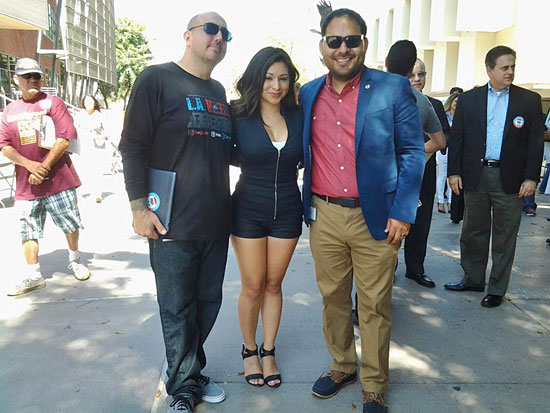
Rikki Martinez of Power 106 with Registrar-Recorder staffers Efrain Escobedo, right, and Phillip Verbera.
Power 106 may be where hip hop lives. But it’s also home to a big part of Los Angeles County’s strategy for getting new voters into the booth.
Yes, that was Power 106 radio personality Rikki Martinez posing for photos this week during a Cal State L.A. voter registration event with Registrar-Recorder staff, including the boss, Dean Logan.
“Ain’t no way I’m go’n let OUR voice go unheard,” Martinez said in her National Voter Registration Day tweet to 33,000-plus Twitter followers (including Logan.)
Don’t touch that dial: it’s a brand new era in voter outreach in L.A. County.
Buoyed by successful partnerships with radio stations during the last presidential election year, 2012, the Registrar-Recorder is seeking to turn things up a notch with the approach of mid-term elections—traditionally a tougher time to engage and motivate would-be participants in the electoral process.
Efrain Escobedo, who helped pioneer the department’s work with radio stations two years ago, said that traditional models—like setting up voter registration tables at events—just aren’t enough to get the job done anymore.
With more than 1 million potential voters in the county still unregistered, he said, it makes sense to turn to radio, with its strong built-in relationships across a variety of platforms. Beyond listening in the car during L.A.’s endless rush hours, audiences stream radio programming on their computers at work and home, while using their cell phones to call in for contests or text in for ticket giveaways.
“The way people live their lives today has changed. Their devices are a central part of how they live their lives and people use media in a much different way than they used to,” said Escobedo, the Registrar-Recorder’s manager of governmental and legislative affairs. “We’re probably not the best messengers. So we identified radio stations to be a medium that is all about having a direct relationship with the listener.”
Tactics like text-back campaigns, in which people vying for free concert tickets get a text message reply urging them to register online, already have proven their value.
Now it’s time to go deeper.
“This year, we’re actually sitting down together with station talent and all of their editors and content managers” to come up with ways to tailor the voting message to each station’s unique audience, Escobedo said.
Although the county is investing $250,000 in the program leading up to the Nov. 4 election, “this is not an ad buy,” Escobedo said. Rather, the idea is “to foster a culture of civic participation within the station” and let in-house teams take the lead on getting the message across.
For example, one of the participating stations, Super Estrella 107.1, will be leveraging the bi-cultural stories of its on-air personalities to create videos about why voting is personally important to them.
“They’re also tapping back to this notion that voting is power and that the Latino community has gained power by voting,” Escobedo said. “They’re showcasing all of these key icons in the Latino community, from Edward James Olmos to Jaime Escalante to Sonia Sotomayor, finding motivational quotes and then they’re reminding people, ‘Hey, we stand on their shoulders, we have to continue to vote to keep this legacy going, so go out and vote.’ ”
While key targets include young Latinos and African Americans of voting age, the media partnerships are across a broad spectrum—from K-EARTH 101.1 and KROQ 106.7 to Jose 97.5-103.1 and television channels in Mandarin, Korean, Filipino and Japanese.
While this election season presents its challenges, voting officials have one distinct advantage this time around: online registration is now well established in California. (You can do it right now, by clicking here.)
After it first was signed into law by Gov. Jerry Brown in 2012, however, voting officials had just 28 days to capitalize on the new mode of signing up to vote before the close of registration. They scrambled, along with their radio partners, to make the most of the short window of time available.
“In those 28 days, 250,000 people registered to vote online [in L.A. County.] Sixty percent of all the people who registered to vote online in that period were under the age of 30—which is the primary demographic for stations like Super Estrella and Power 106,” Escobedo said. “So I’d like to think that we were a huge driver in that. The last day to register to vote, we did a huge push with the stations…That day alone, we had 90,000 people register to vote.”
This year, registration closes on Oct. 20. As that day approaches, look for more events like the one that drew Rikki Martinez to Cal State L.A.—where some 300 students took advantage of the festivities to sign up to vote—along with a stream of online and on-air pitches that are anything but conventional.
“Because no one’s going to come to an event to register to vote. They’re going to come to be inspired,” Escobedo said. “We truly believe that we’ve found the winning formula.”
Posted 9/26/14
Time to grin and bear it for CEO
September 25, 2014
This is the story of Bill and the three bears.
Last Sunday afternoon, the county’s chief executive officer was pursing his usual weekend pasttime—terracing his sprawling, hilly backyard with bricks—9,000 of them , so far—when his wife bolted out of the house. She announced that three sheriff patrol cars were blocking the driveway and that officials from the state Department of Fish and Wildlife were there, too.
Why the commotion? A mother bear and two cubs had shimmied up an oak tree in front of Fujioka’s house in the tiny city of Bradbury, nestled at the base of the San Gabriel Mountains near Monrovia. They’d been spotted on a busy street in the area and were being guided back towards the mountains by authorities when the parched and hungry animals decided to hole up at Fujioka’s place.
“Holy smokes,” Fujioka exclaimed as he saw for himself what was unfolding out front.
Wildlife officials told Fujioka that because of the severity of the drought, the bears had wandered from the mountains looking for food and water. “It was sad,” Fujioka said. “The mother’s fur looked bad and the cubs looked malnourished.”
At one point, Fujioka said, he started walking towards the tree when the mama bear “started hitting the branches.”
“Back up!” a wildlife official told Fujioka. “She’s warning you. If you keep going, she’ll come down that tree and charge you.”
After more than an hour, the bears did climb down but quickly jumped Fujioka’s fence and high-tailed it into another tree, a birch that was even closer to the house. “From my bedroom window,” the CEO recalled, “I could look at the bear eyeball-to-eyeball.”
By now, the news crews had arrived, hoping for footage of the bears’ descent.
As they waited, a reporter for KABC-TV interviewed Fujioka, who admittedly was “as filthy as could be” from his backyard brick work.
Usually when he makes the news, Fujioka is seen unveiling the county’s budget or taking part in other official business. This time, his name was misspelled as “Fugioka” and there was no mention of his position with the county. He was just another neighborhood man in the news. And that neighborhood is no stranger to attracting media attention for its occasional bear visitors. A few years ago, one made headlines for taking a dip in a resident’s hot tub.
On Sunday, in the end, the bears waited out almost everyone—the deputies, the fish and wildlife people, even the news hounds. Everyone except Fujioka and his wife, Darlene Kuba. After more than two hours in the branches, at about 4 p.m. the trio inched down and literally hit the bricks, ambling across Fujioka’s prized, terraced backyard and then back into the hills—leaving Darlene as the lone chronicler of the moment. Here are some of her pictures of the bears on the lam:
Piloting a path away from jail
September 18, 2014
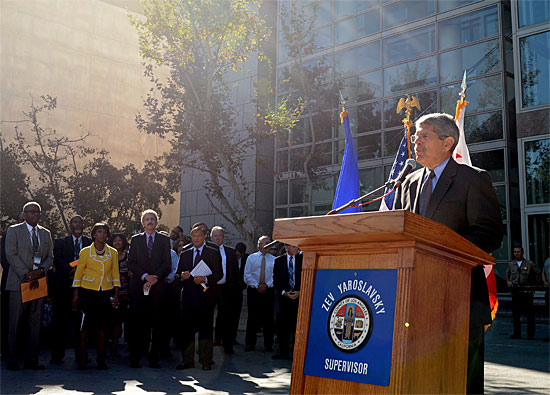
Supervisor Zev Yaroslavsky announces the creation of a new jail diversion program, with Dist. Atty. Jackie Lacey, in the yellow jacket, among those in attendance.
Confronting a jail system packed with rising numbers of mentally ill inmates, an unprecedented coalition of criminal justice and social services agencies have rallied behind an initiative that stresses rehabilitation over punishment for certain low-risk offenders and holds out the promise of reduced recidivism.
Eleven agencies—including the Superior Court and the offices of the district attorney, city attorney and public defender—are collaborating in the pilot project, orchestrated by Los Angeles County Supervisor Zev Yaroslavsky as a way to provide chronically homeless and severely mentally ill individuals with a carefully proscribed path out of jail and into recovery.
“I believe this is a more intelligent way of dealing with people like this, rather than putting them in jail, which is a far more expensive and less effective way to address mental health issues,” Yaroslavsky said during a Wednesday news conference at the Van Nuys courthouse.
“This program is going to start here, at the Van Nuys Courthouse and at the San Fernando Courthouse, but it could easily be placed in Compton, in Pomona, in Inglewood, Santa Monica, anywhere,” said Yaroslavsky, who allocated nearly half of the initiative’s $750,000 price tag from his district’s discretionary funding.
Among those who stood alongside the supervisor for Wednesday’s announcement was Los Angeles County Dist. Atty. Jackie Lacey. In recent months, she has become the leading proponent of alternative sentencing for low-risk mentally ill offenders, whom she says have little chance of success inside the county’s overcrowded lockup.
Lacey called the incarceration of such defendants, who suffer from bipolar disorder, schizophrenia, post-traumatic stress syndrome and other mental illnesses, an “unconscionable waste of human life and money.”
The new Third District Diversion and Alternative Sentencing Program will, under a series of specific conditions, provide 50 eligible participants with a variety of wraparound services—including permanent supportive housing and mental health treatment—intended to keep them off the streets, out of jails and emergency rooms, and put them on a path to self-sufficiency. Those services will be arranged by the non-profit San Fernando Valley Community Mental Health Center.
Under the program’s protocols, prosecutors and public defenders will collaborate with psychologists to identify severely mentally ill—but nonviolent—chronically homeless individuals eligible for the program’s shelter, counseling, medication management and other services, including employment and vocational assistance. A judge must approve the defendant’s participation.
Eligible misdemeanants will undergo treatment for 90 days and pay restitution, if necessary. Charges will be dismissed after the successful completion of the program. Otherwise, the criminal case will proceed.
Eligible felons, meanwhile, will be required to plead guilty or no contest to the charges against them and undergo treatment for 18 months, with case managers and probation officers regularly checking their progress. They also will have to pay restitution.
“What I like about this program is it does have a lot of leverage with participants,” said Adrian Sheff, director of adult and older adult programs at the San Fernando Valley Community Mental Health Center. “They’re not just being diverted from jail and told to bring a note back from their treatment provider to say they completed the program. Instead, there are ongoing reports, feedback with the court and probation and other measures to ensure they won’t wind up back in jail or commit new offenses.”
City Atty. Mike Feuer, whose office prosecutes misdemeanors, agreed during Wednesday’s event that jail is the wrong place to deal with severe mental illness. He said the pilot program’s more “innovative and humane” approach will keep neighborhoods safer.
Said Superior Court Presiding Judge David Wesley: “It is sometimes in the best interests of the public, and of mentally ill offenders, to divert someone from the criminal justice system.”
Los Angeles County Mental Health Director Marvin Southward said he hopes the pilot program marks the beginning of lasting reforms in the way the criminal justice system treats the severely mentally ill and chronically homeless.
“I think we have to show that by investing in an intensive program like this, we could produce good enough outcomes and save enough money that it’s worth spreading this model to other places.”
Posted 9/18/14
Trouble at sea
September 18, 2014
A punishing heat wave sent thousands of people fleeing to the beach this week, but many who tried to cool off in the ocean found themselves in hot water instead.
The Los Angeles County Fire Department’s Lifeguard Division saved more than 1,000 swimmers and surfers swept up by rip currents and other hazards over a five-day period when temperatures peaked at 107 degrees in the San Fernando Valley.
This brought the lifeguards’ total number of rescues up to about 12,000 since January. That’s their third highest tally ever in a single year — with three months still remaining in 2014.
Acting Chief Lifeguard Steve Moseley attributes the spike to a rare confluence of factors: A surge in beach attendance driven by extended periods of unseasonably hot weather, more frequent occurrences of high surf and a warmer ocean.
“All of these contributing factors have combined to create one of the busiest years in recent memory for the Lifeguard Division,” Moseley said.
To date, beach attendance has hit 61 million — well past the 20-year average of 54 million and on pace to exceed last year’s 71 million.
“It’s been so hot inland that everybody’s coming to the beach, even on a Tuesday or a Wednesday,” said Ocean Lifeguard Specialist A.J. Lester. “And because ocean temperatures are warmer, everybody’s staying in the water all day long.” (Tips on staying safe on the beach are here.)
Jet Propulsion Laboratory climatologist and oceanographer Bill Patzert said swimmers and surfers have been particularly vulnerable to being swept away by rip currents, and falling into deep grooves on the ocean floor.
He explained several hurricanes and tropical storms spawned by El Nino conditions in the equatorial Pacific scored the ocean floor, leaving uneven contours.
“The county’s south-facing beaches have been hit with big waves, almost week after week,” Patzert said. “Hurricane Norbert is breaking up, but we have yet another one forming now.
“Because these tend to change the configuration of the ocean bottom,” he added, “people very easily can get into water over their heads in these rip currents.”
Lester said the county employs 200 full-time and 700 part-time lifeguards and has “needed every one of them.” He himself rescued 18 people in a single day last spring, including a pair of boogie-boarding teenagers swept away by rip currents.
“The sister was screaming blood-curdling screams because her brother had fallen off his board and, basically, he was drowning,” Lester said. “I wrapped them around my rescue can but a wave slammed us down to the bottom, and when we got back to the surface, we were all spitting up water.”
Moments after he brought the siblings ashore, he had to dive back in for yet another double rescue. “Then I returned to my tower and parked my truck, but before I could even dry off, we had to pull more people out,” Lester said.
“It’s gotten to the point sometimes when we’re going from one rescue to the next,” Lester said. Still, he added, “There’s nothing more rewarding than completing a rescue, coming back to the beach, and watching those kids run back to their parents, and they’re all hugging each other, and thanking us.”
Section Chief Chris Linkletter said lifeguards also have racked up 1 million “preventions.”
“This means we have prevented that number of people from either becoming rescues or getting into a hazardous situation,” she said.
Amid all the rescues, however, there also have been mishaps.
On Monday, a lifeguard driving a pickup truck back to his tower accidentally ran over a sunbather, who survived but sustained fractures and lacerations to her internal organs.
It was the second such accident this year. In May, another sunbather was hit by a county beach maintenance vehicle.
Posted 9/18/14
A big legacy, no bones about it
September 15, 2014
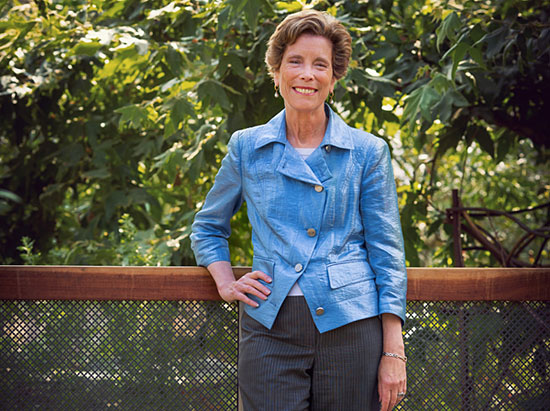
Pisano in the county museum's nature gardens, where she loves to walk. "The big bonus is those gardens used to be parking lots," she says. Photo/Christina Gandolfo
Over the past 13 years, Jane Pisano has presided over a dramatic transformation of the county’s venerable Natural History Museum.
Huge emblems of her accomplishments are visible all over the museum, from the striking glass entry pavilion featuring a suspended 65-foot fin whale to the trio of fearsome young T. rexes showcased in the new Dinosaur Hall.
But those show-stoppers don’t tell the whole story of the NHM as reimagined on Pisano’s watch.
With her recent announcement that she will be retiring from her post once a successor is named, it’s time to take a spin through some of the exhibits and artifacts—large and small—that have meant the most to Pisano over the years.
Here are a few of her favorite things—from a buzzed about “hotel” in the museum’s gardens to a stained glass window with a trans-generational backstory.
A really big sea lion
“There are parts of this museum that I just love because my grandchildren love ‘em,” Pisano says—like the dioramas. “My favorite is an enormous sea lion that is in the North American Mammal Hall and I’ve never seen one as big in nature but he looks like he could be almost anywhere on the California coast, preening and proud and clearly the biggest one around. I love the California coast so this one has special appeal to me.”
All that glitters
“I love the gold exhibit in the Gem Hall because it tells this wonderful story of California gold and the Gold Rush. You can kind of lose yourself in the abundance of it. And the story is so compelling. Almost all that gold, if not all of it, comes from California mines.”
The case of the pregnant plesiosaur
This fossil, between 72 million and 78 million years old and now residing in the museum’s Dinosaur Hall, “encapsulates in one object all of the things that we do here,” Pisano says. Not only does the fossil showcase groundbreaking findings by museum scientists but it also comes with some gee-whiz factoids. (Who knew that newborn plesiosaurs came into the world at 40% of the mother’s size?)
A whale of an early mammal
This 52-million-year-old Pakicetus skeleton in the Age of Mammals exhibit, which is seen on the left above, is—believe it or not—“a close relative of the modern whale,” Pisano says. The creature probably spent a lot of its time in the water, like the hippo. “It really shows that the early mammals, after the age of dinosaurs, adapted in search of food.”
The bee hotel
“I love, love walking in the garden and one of my favorite places to check is the Bee Hotel. You think you know about nature because it’s all around us, but when you go to the nature gardens, you just look and you see in a new and different way.”
Grandson to the rescue
When the 101-year-old museum was undergoing renovation, the stained glass window that crowns the Haaga Family Rotunda was showing signs of its age. “We built a platform there, and the grandson of the guy who designed and installed that window came and cleaned it and fixed it, reconnected it in places where gravity was really jeopardizing the glass. I never look at that without thinking about the whole process of saving it and preserving it.”
Where kids turn into scientists
“I love everything in the Nature Lab. One of my very favorite things is to walk through the Nature Lab in the middle of the day and see the children gathered around the table where our scientists are working, engaged and interested and asking questions about what they’re doing. I love that.”
Posted 9/15/14
Finding justice in the stacks
September 11, 2014

Martha Jimenez has used the Law Library to fight legal battles from L.A.'s eastside to Zacatecas, Mexico.
Perhaps no one knows how to use the Los Angeles County Law Library better than Martha Jimenez.
Since her college days at UCLA, the 45-year-old community activist has been taking advantage of the public facility in L.A.’s civic center to research an array of legal topics, from environmental regulations and landlord-tenant laws to city planning issues and Mexican civil procedure.
“This is like the international safe haven to address issues,” Jimenez said.
In the 1990s, she used the library to fight back when the Mexican government tried to take her grandparents’ house by eminent domain. Jimenez researched the relevant statutes and procedures and her family filed suit. In the end, they emerged victorious over the then-governor of Zacatecas.
“The governor did not know how to write his court document,” Jimenez said. “It was here that I learned that process.”
More recently, Jimenez used the library to protect her local community of City Terrace on the eastside from becoming a waste storage site for the City of Santa Clarita and a private trash hauler. After researching environmental regulations, she appealed to the City of L.A. and the Sanitation Districts of L.A. County. Again, she won.
“I empowered my community and collected 5,000 signatures,” Jimenez said. “We organized and said, ‘You cannot come into our community.’ And they stopped.”
Jimenez is one of an increasing number of self-represented litigants who’ve discovered the L.A. Law Library, said Sandra Levin, the library’s executive director. Since taking the position 19 months ago, Levin estimates that daily attendance has risen about 50%, from 200 to 300 people per day.
“I told my board that my goal is to come with a request to replace the carpet because we wore it out,” Levin said.
Hiring a lawyer simply isn’t an option for a growing segment of the population, Levin said. She and her librarians want to bridge the resulting gap in access to justice.
“There’s a real crisis right now in our society and our courts because many people are faced with legal issues and can’t afford representation. Most average citizens don’t know where to turn,” Levin said, adding that about 70% of litigants in family law cases now do not have attorneys “and the numbers are growing in basic civil cases, too.”
Over the past few years, the library has made significant upgrades, including a reorganized reference desk and computers, a renovated exterior and a new training center. “It looks totally different than before,” Levin said.
To improve outreach, Levin is offering classes and workshops taught by library staff, attorneys and nonprofit organizations. Topics include how to clear criminal records, researching with online legal databases, preparing for family law trials and how to file for a legal name change. All are provided free or for a small fee, ranging from $10 to $35.
Her reference staff handles the front lines, where people come in with all sorts of legal problems. Among the most common are evictions, divorces and child custody matters. Others, like the man who sued a boating company after being left out at sea for 12 hours, require digging a bit deeper into the public collection, the second largest in the United States after the Library of Congress.
Levin recalls two parents who came in because their child’s school wouldn’t allow them to visit during the day. “They wanted to see the school in operation and check on their child,” Levin said. “The librarians here helped them find the statute that says that you have a right to go into a public school to see your child.”
Ralph Stahlberg, the head reference librarian, remembers one homeless man who filed a lawsuit against the police for taking his belongings. “He came here and got resources,” Stahlberg said. “He fought it and won.”
Neel Agrawal is the research librarian in charge of the global law collection. He said small business owners often show up seeking assistance with the complex legal requirements regarding exporting products, trade routes and other concerns that large businesses typically hire law firms to handle.
Librarians direct their patrons to books written for non-lawyers or, if a visitor is more sophisticated, to more complex reference books. Still others need advice on the basics, like how to address a judge (“your honor,” rather than “sir” or “madam”.)
While unrepresented litigants have been on the rise, the trend was spotted by the State Bar of California back in 1997. In response, the California Commission on Access to Justice was created “to explore ways to improve access to civil justice for Californians living on low and moderate incomes.” Later, the Judicial Council of California—the state’s policymaking body for the courts—formed a Task Force on Self Represented Litigants. In 2004, the task force issued a Statewide Action Plan for Serving Self-Represented Litigants. Central to the plan was the creation of courthouse self-help centers to provide one-on-one assistance with family law and eviction cases.
Business is booming. According to Superior Court spokesperson Mary Hearn, more than 200,000 “incidents of service” have been provided annually during the past few years at centers across the county, including in Santa Monica, San Fernando and Van Nuys. The law library, meanwhile, collaborates with them to identify what kinds of services are most needed.
“The courthouses are wonderful but they have limited scope,” Levin said. “They offer a pretty wide range of family law issues and some landlord-tenant issues, but beyond that there isn’t much assistance.”
Nonprofit organizations like Public Counsel and Legal Aid Foundation of Los Angeles also help people who can’t afford an attorney, but still can’t meet the enormous demand.
The law library also serves people who aren’t facing litigation, as well as those who can afford an attorney. Understanding legal rights in advance can resolve or prevent costly court battles. Levin gives the example of a worker who believes she may have been sexually harassed, but isn’t sure. One hour of research at the library could prevent an unnecessary fight that might damage the person’s career interests.
“Someone has to teach people how to understand their rights, represent themselves in court and do legal research,” Levin said. “That’s what we do.”
Posted 8/14/14
A Grand party—unless you were green
September 11, 2014
The fans were ecstatic and the downtown boosters were declaring victory.
But as Grand Park awoke this week from its most ambitious gathering so far, it was clear that for at least one constituency, last weekend’s Made in America extravaganza was no party.
Ladies and gentlemen, give it up for the poor shrubbery.
Although cleanup crews said this week that the new park rebounded surprisingly well from the 70,000-plus fans who stomped, jumped and danced their way through the Civic Center park over Labor Day weekend, a damage assessment prepared for the county offered the sordid details.
Some 10,000 square feet of lantanas, bougainvillea, aloes, drought-tolerant grasses and other greenery—drawn from around the world to reflect the diversity of L.A.—will have to be pulled out and replaced in the aftermath of the two-day concert. In the section of the park closest to the main stage in front of City Hall, more than 1,500 separate plants, many of which had been growing into maturity for nearly two years, must be replaced.
“The trees weren’t too damaged, but a lot of the plants in the planters were completely smashed and broken,” said Sergio Hernandez, manager at ValleyCrest Cos., the Calabasas-based landscaping contractor that maintains the 12-acre park for the county. “It almost looked like people were standing on some of the shrubs.”
The botanical casualties were estimated by ValleyCrest at about $50,000 park-wide. Hernandez said the new plants will probably take until next spring to reach the same size as they were before concertgoers arrived.
Live Nation, the concert promoter, is contractually obligated to cover the costs of the landscaping and other damage, including the replacement of six thick tiles in the popular Arthur J. Memorial fountain splash pad, which were broken during the construction and tear-down of a stage.
Despite the damage, the event—curated by rapper Jay Z and headlined by such international names as Kanye West, John Mayer and Steve Aoki—won wide praise from its many boosters, including Los Angeles Mayor Eric Garcetti. Among other things, it generated some $600,000 in fees for the county and $500,000 for the city, while showcasing Grand Park as a potential rival to the Coliseum, the Rose Bowl and other signature Southern California gathering spaces.
A spokeswoman for the mayor said his office still is assessing last weekend’s economic impact, but press interviews with downtown merchants indicated that their businesses had gotten a much-needed boost, and park planners said the event, overall, was a net benefit to the public.
“You want the park to be used, and you want it to be used for different things,” said Dawn McDivitt, who managed the development of Grand Park for the county Chief Executive Office before leaving to become chief deputy director of the Natural History Museum of Los Angeles County this year.
“When a big ticketed event actually rents the park, you get not only the side benefit of additional revenue for more public programs, but also the ability to reach a different type and age of audience, who will come down and enjoy other, free, events at the park later.”
But, she added, “a big, ticketed event also can be a concern because the park was established for the public, and you have to make sure that the public will still be able to enjoy it afterward.”
Grand Park officials said that the landscaping should be restored by next week, along with the completion of repairs on the fountain and a damaged irrigation line.
The preliminary assessment, prepared by ValleyCrest, estimated that $38,898 in damage had been caused near the park’s main event lawn, between Broadway and Spring Street.
Irrigation repairs and plant replacement elsewhere in the park will probably cost an additional $14,000, said Christine Frias, a program manager in the CEO’s office who coordinated the county’s Made in America involvement. She said the county was able to keep landscape costs lower by fencing planters that weren’t in the flow of foot traffic.
Grand Park Director Lucas Rivera said that, given the size and scope of the event, the impact was considerably lighter than anyone had anticipated.
“Made in America provided Angelenos with amazing entertainment and put Grand Park on the national stage,” said Grand Park Director Lucas Rivera. “With any event held in a public space, and with the amount of people who attend, there’s always going to be some wear and tear on the venue.”
Posted 9/4/14
Heroism forged in pain
September 11, 2014
Ambyr Rose descended from generations of drug-addicted mothers whose children ended up in the foster care system. She, however, overcame that legacy of abuse and neglect and now helps broken families become whole again.
On Tuesday, Supervisor Zev Yaroslavsky named her the 3rd District’s Family Reunification Hero, citing her work in the Department of Children and Family Services’ Parents in Partnership program.
“Her passion for encouraging others to engage in recovery and to find their way towards reunification with their children is what set her apart,” Yaroslavsky said.
This was the fifth year for the Family Reunification Hero awards, which honor individuals, families, organizations and agencies who’ve made significant contributions towards helping children return to their homes and families. Every year, each member of the Board of Supervisors awards a scroll to the hero chosen for his or her district.
Rose, a 31-year-old Sylmar resident, said her traumatic experiences have strengthened her resolve to restore families torn apart by drug abuse, alcoholism, domestic violence, poverty and other reasons.
“I think the reason I went through everything I did is so that I can help others, make a difference in their lives,” she said. “I truly, honestly, believe that we all have a purpose, and this is mine.”
Rose’s resilience helped her break her family’s cycle of tragedy and despair.
Her grandmother, a heroin addict, killed herself while playing Russian roulette. Her mother, orphaned at a young age, entered foster care and also became hooked on drugs.
Rose bounced around from foster home to foster home until aging out of the system. She also suffered from sexual abuse.
Trying to dull her pain, she reached for the same stuff that ruined her mother and grandmother.
“Crystal meth was my drug of choice but I used anything, really — anything to fill a void, anything to numb myself,” Rose said.
By age 21, she was homeless and the mother of three young children.
“We were sleeping in the stairwells of buildings, in cars, basically any spot that we could find a place,” Rose said. “I hit rock bottom in 2005 when my youngest, who was 18 months old, had pneumonia for the third time and had to be hospitalized.”
She decided to “call DCFS on myself,” prompting social workers to place her children in a foster home in Palmdale.
Over the next year, Rose remained a slave to her drug addiction and didn’t once call her children, thinking they were better off without her. But when a court moved to terminate her parental rights so her children could be adopted, Rose checked into rehab.
She was then pregnant with her fourth child.
Rose stayed sober and learned job skills through the Via Avanta Residential Center in Pacoima, obtained housing through the federal Section 8 program, and childcare support and other aid through CalWorks.
Rose was reunited with her children in 2007.
Almost a decade after she hit “rock bottom,” Rose remains sober, is close to earning a degree at a community college and works for DCFS as a “parent partner.” Her two oldest children are both honor students.
“She’s magnificent,” said 27-year-old Shelly Sor of Northridge, who is trying to regain custody of her children after being accused of not doing enough to help a son with a behavioral disorder.
“If Ambyr hadn’t given us the tools, the support, I think we would have failed completely,” Sor said. “If she hadn’t been there, I think we would have given up.”
Rose’s fellow parent partner, Ryan Bennet, nominated her as a Family Reunification Hero.
“The biggest thing about Ambyr is her attitude,” Bennett said. “She’s always looking for solutions, always willing to keep fighting.”
Posted 9/11/14










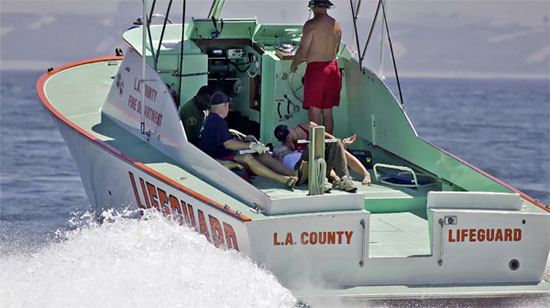
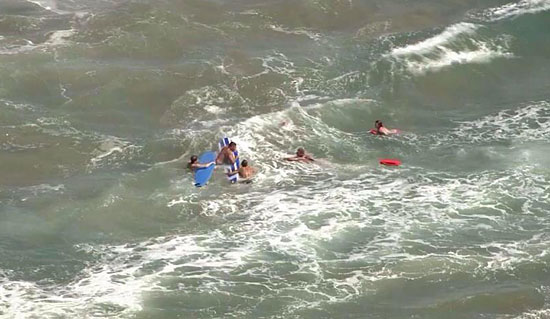
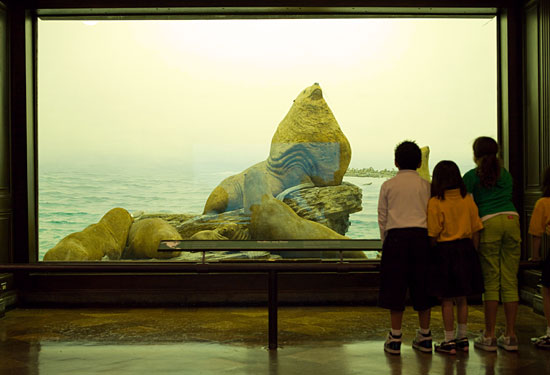
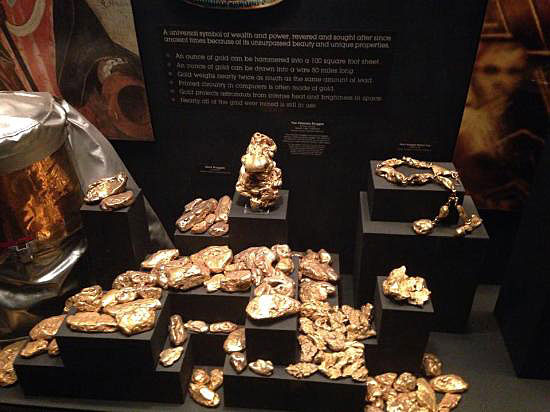
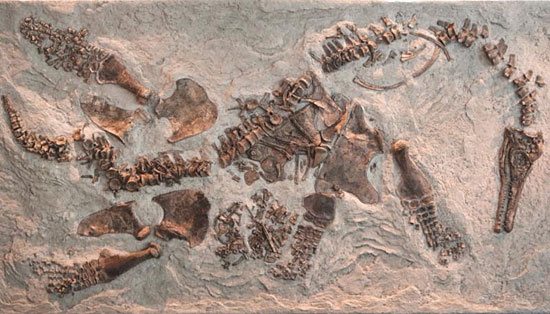
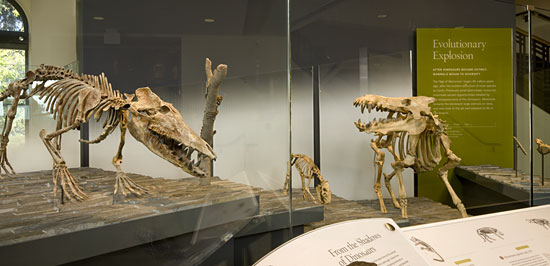
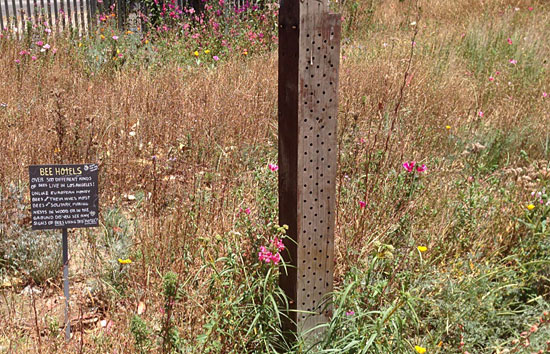
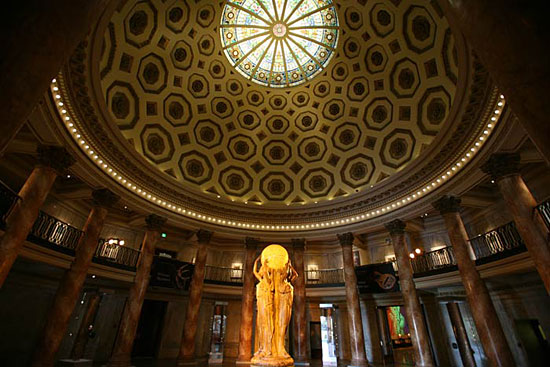
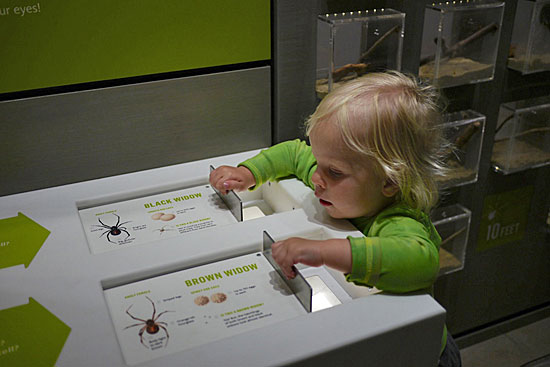
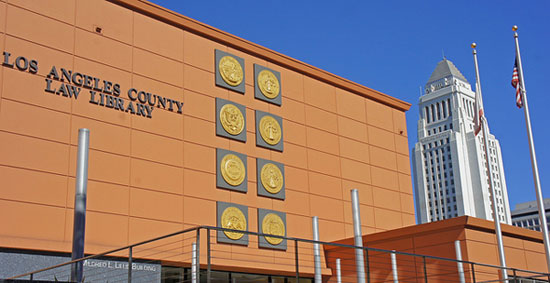


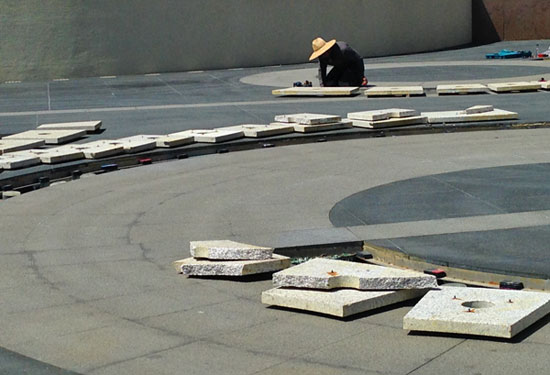
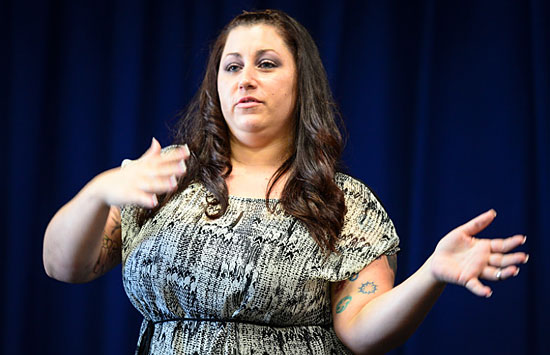





 Check for the latest closure information
Check for the latest closure information








